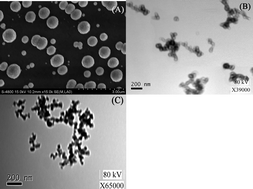A novel amperometric immunosensor constructed with gold–platinum nanoparticles and horseradish peroxidase nanoparticles as well as nickel hexacyanoferrates nanoparticles
Abstract
In this study, three nano-materials comprising gold–

* Corresponding authors
a
The Key Laboratory of Eco-environments in Three Gorges Reservoir Region, Southwest University, Chongqing 400715, China
E-mail:
yuanruo@swu.edu.cn
Fax: +86 23 68253172
Tel: +86 23 68252277
b College of Chemistry, Chongqing Normal University, Chongqing 400047, China
In this study, three nano-materials comprising gold–

 Please wait while we load your content...
Something went wrong. Try again?
Please wait while we load your content...
Something went wrong. Try again?
Q. Zhu, R. Yuan, Y. Chai, J. Han, Y. Li and N. Liao, Analyst, 2013, 138, 620 DOI: 10.1039/C2AN36085C
To request permission to reproduce material from this article, please go to the Copyright Clearance Center request page.
If you are an author contributing to an RSC publication, you do not need to request permission provided correct acknowledgement is given.
If you are the author of this article, you do not need to request permission to reproduce figures and diagrams provided correct acknowledgement is given. If you want to reproduce the whole article in a third-party publication (excluding your thesis/dissertation for which permission is not required) please go to the Copyright Clearance Center request page.
Read more about how to correctly acknowledge RSC content.
 Fetching data from CrossRef.
Fetching data from CrossRef.
This may take some time to load.
Loading related content
